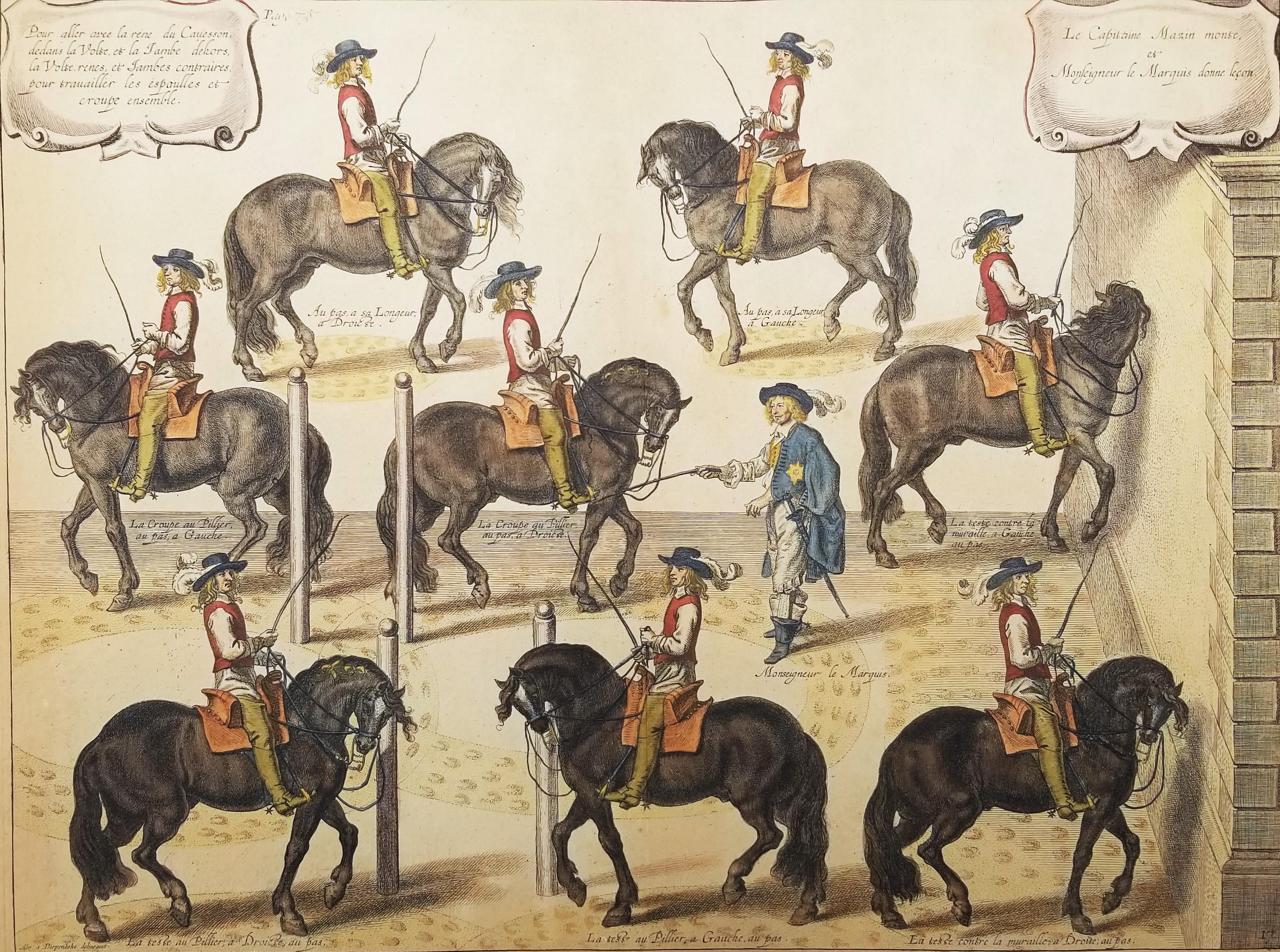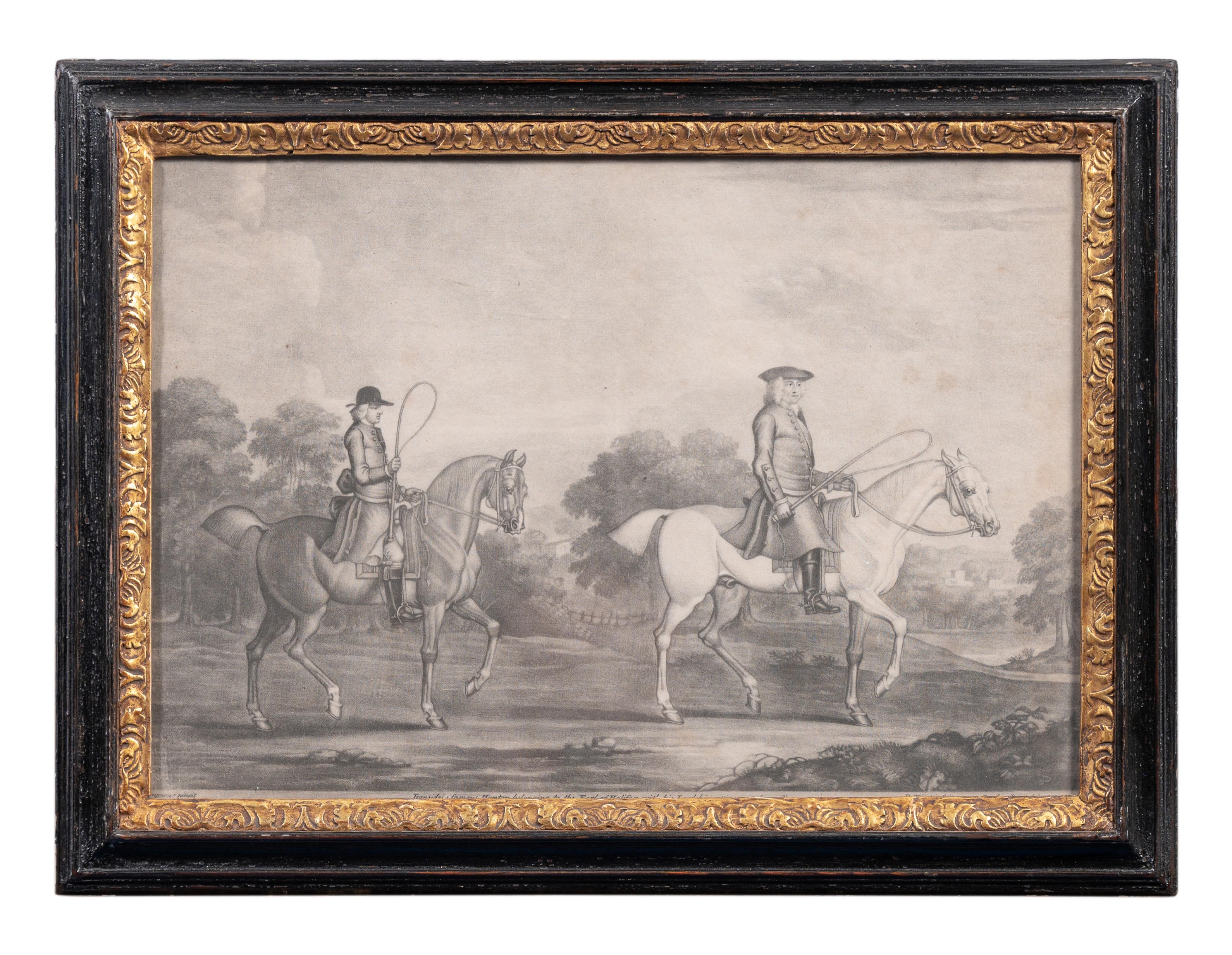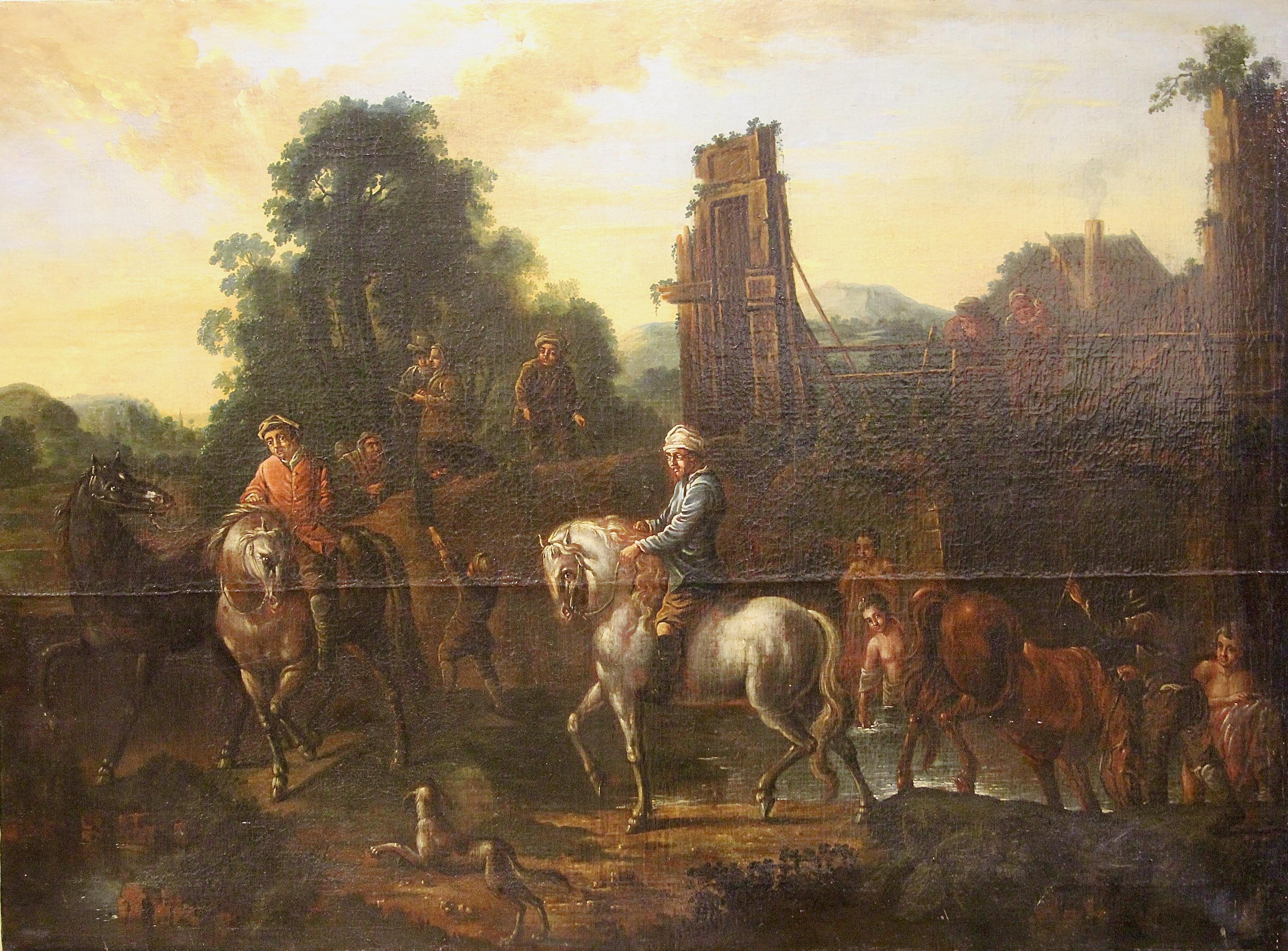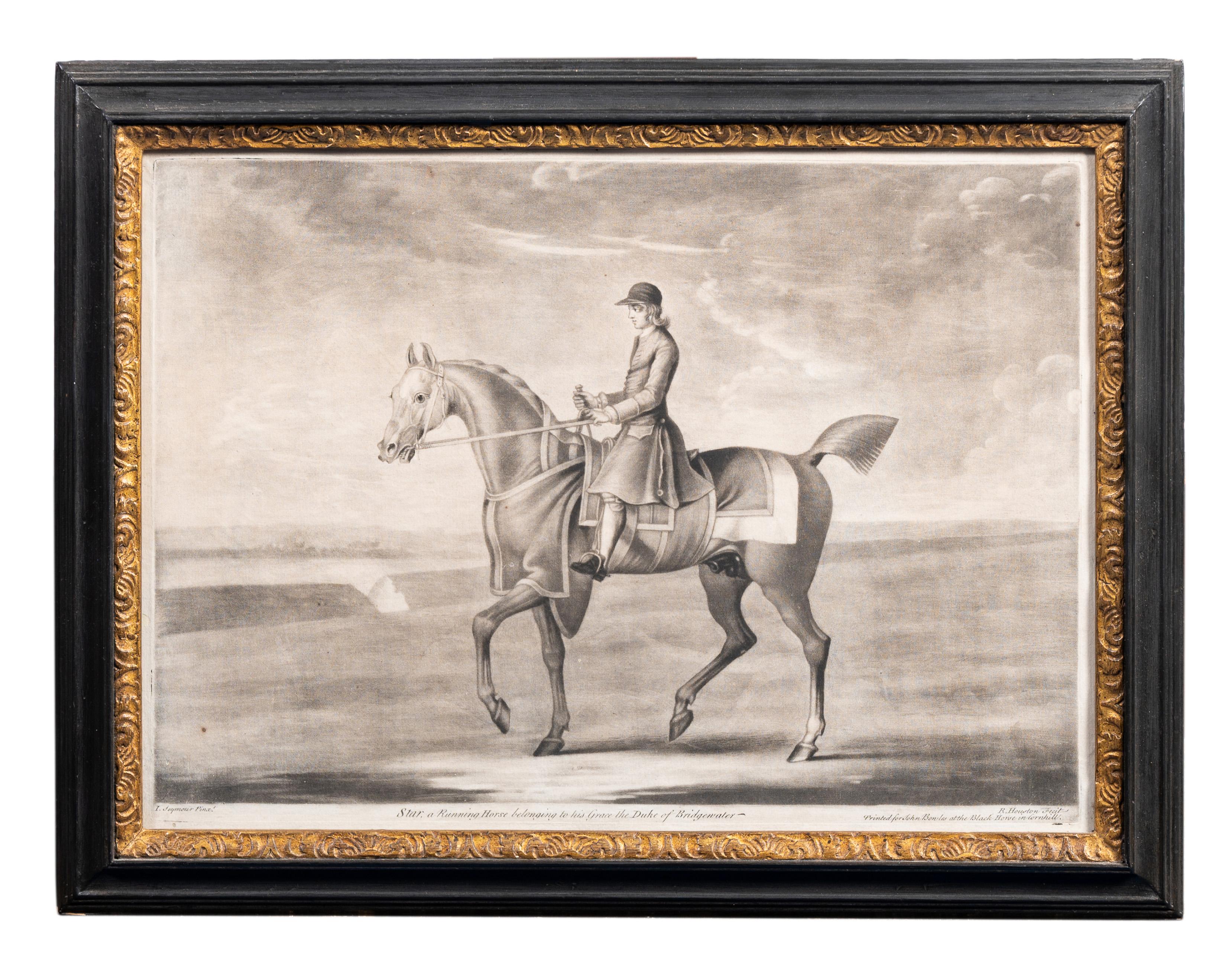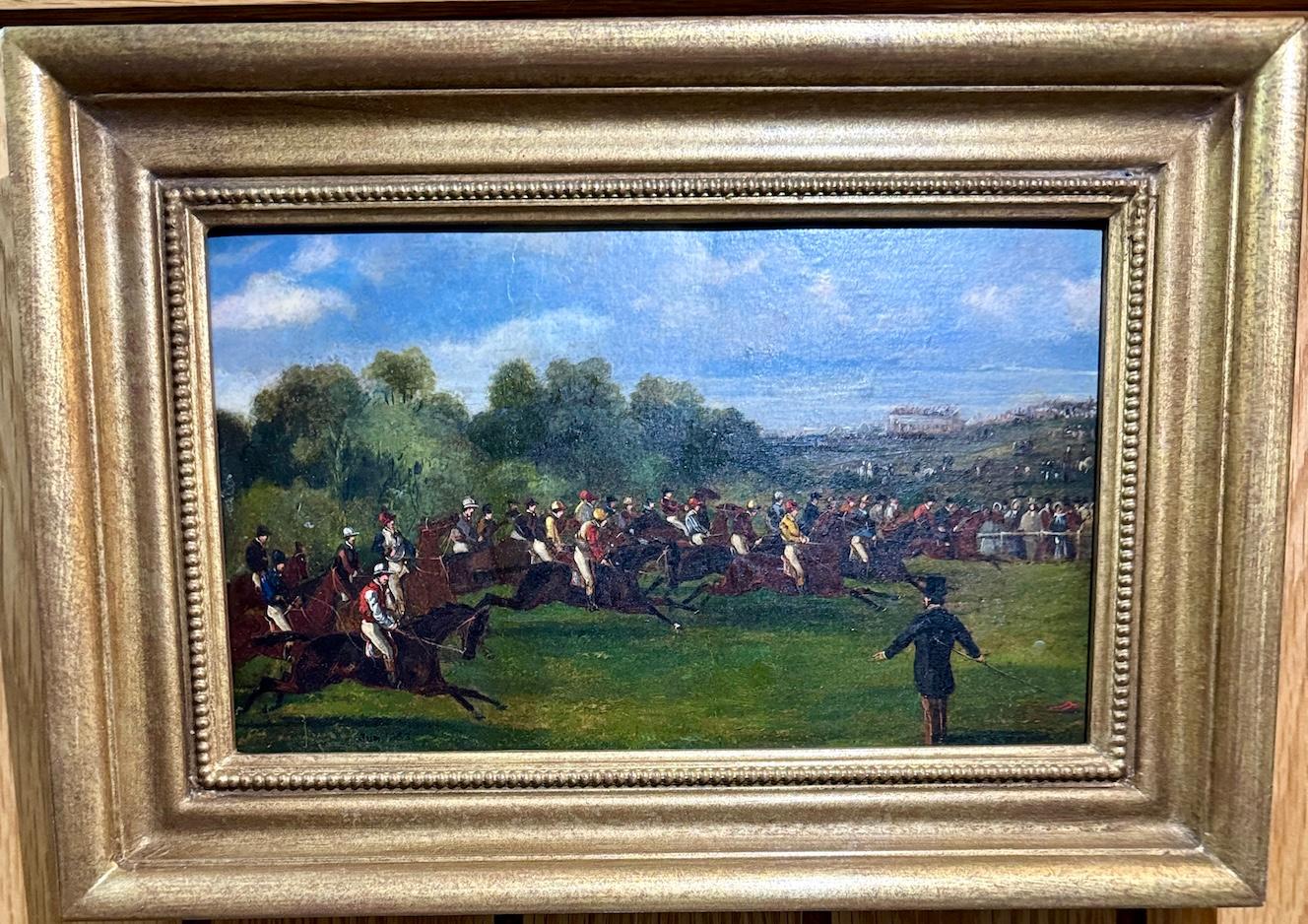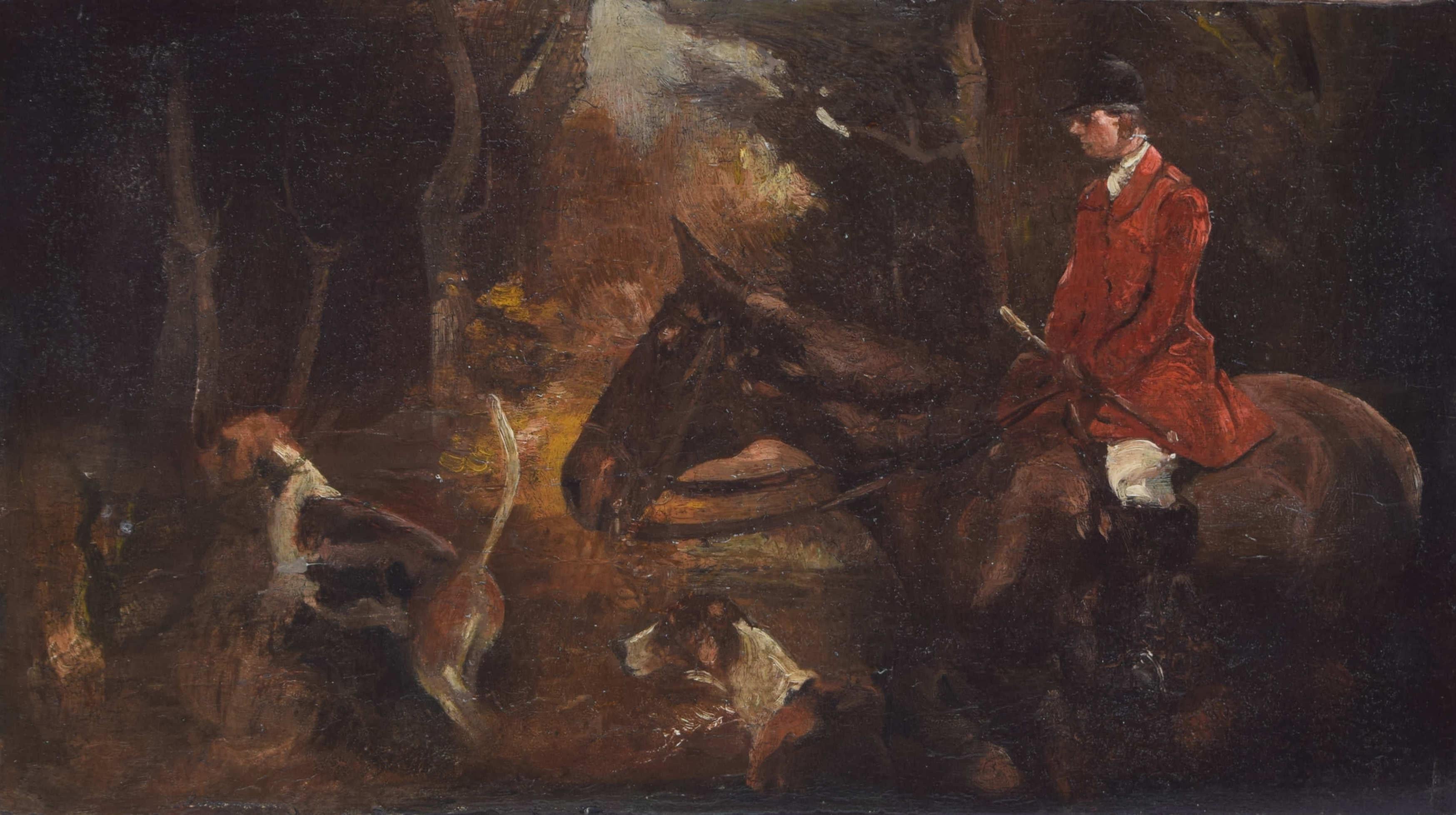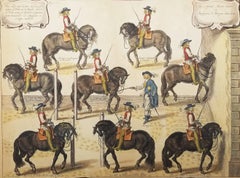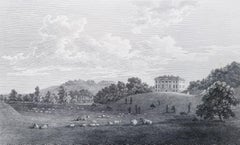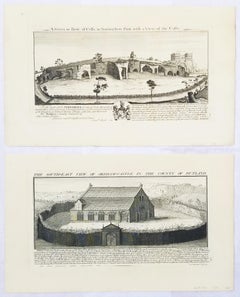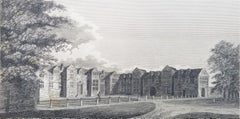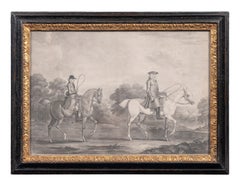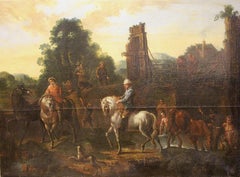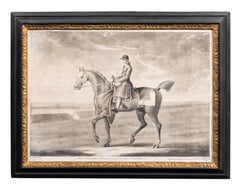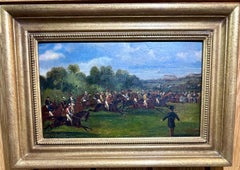Artículos similares a Welbeck Park Belongs to the Marquis of Newcastle /// Equestrian Horse Old Master
¿Quieres más imágenes o vídeos?
Solicita imágenes o vídeos adicionales al vendedor
1 de 21
William CavendishWelbeck Park Belongs to the Marquis of Newcastle /// Equestrian Horse Old Master1737
1737
1059,27 €
Acerca del artículo
Artist: William Cavendish (English, 1593-1676)
Title: "Welbeck Park Belongs to the Marquis of Newcastle" (Plate 38, Page 263)
Portfolio: Methode et Invention Nouvelle de Dresser Les Chevaux (New Method and Invention of Dressing Horses)
Year: 1737 (Second edition)
Medium: Original Hand-Colored Engraving and Etching on watermarked laid paper
Limited edition: Unknown
Printer: Jean Brindley, London, UK
Publisher: Jean Brindley, London, UK
Reference: Brunet I, 1699; Graesse II:93; Lowndes VI:1663; Mellon/Podeschi 26, page 34-35; Mennessier de la Lance II, page 246-247; Nissen ZBI 848; Huth page 21
Sheet size: 17" x 21.25"
Image size: 15" x 20"
Condition: Toning to sheet and some edgewear in right margins. Centerfold is separated at very top and bottom in margins. It is otherwise a strong impression in good condition with strong colors
Notes:
With overlapping centerfold as issued. Engraved by Dutch artist Theodor van Kessel (1620-1696) after a drawing by Dutch artist Abraham van Diepenbeeck (1596-1675). Comes from Cavendish's one volume "Methode et Invention Nouvelle de Dresser Les Chevaux", (1737) (Second edition), which consists of 42 double-paged engravings. Printed in one color from one copper plate: black. There is an unidentified fleur-de-lis style watermark in the center of the left sheet.
The 1657-1658 (First edition) of "Methode et Invention Nouvelle de Dresser Les Chevaux" was printed and published by Jacques Van Meurs in Antwerp, Belgium in two issues, 1657 and 1658. It consists of 42 double-paged copperplate engravings executed by Dutch artists Pieter de Jode II or (the Younger) (1606-1674), Pieter Clouwet (1629-1670), Pieter van Lisebetten (1630-1678), Cornelis Van Caukercken (1626-1680), Lucas Vorsterman II (1624-c.1666), Adriaen Lommelin (1620-1673), and Theodor van Kessel (1620-1696) after drawings by Dutch artist Abraham van Diepenbeeck (1596-1675). "This first printing was largely destroyed by fire in the bookseller’s shop, and is all but impossible to acquire." - Brunet. The 1737 (Second edition) of "Methode et Invention Nouvelle de Dresser Les Chevaux" was the first to be published in England using the same original 42 copperplates and 50 woodcut text diagrams from 1658, acquired by printer/publisher Jean Brindley in London, UK.
"The Duke of Newcastle, a staunch royalist went into exile to Antwerp in 1644. Newcastle had bought a pair of Barbary horses in Paris and set up a stable for training his horses. Translated from his manuscript in English, it illustrates the riding school which, in spite of the loss of a vast fortune in England during the Civil War, he managed to build up at Antwerp where he was residing as an exile from the Commonwealth. Although showered with honors by Charles II at the Restoration, he retired to his estates in Derbyshire and devoted himself to literature, the breeding of horses and equitation. His manége near Bolsover still exists. This work, partly paid for by his friend Sir Hugh Cartwright, is a celebration of Dukes' horses and their training. The plates include five equestrian portraits, four of the author; five plates of his own horses; and 24 scenes showing horses being trained (most featuring the Duke, Captain Mazin and occasionally, a groom named Palfrenier). There are also two allegorical designs, in which the Duke is adored by a circle of reverential horses, and at the end a portrait of the Cavendish family." - Christie's, New York
Biography:
William Cavendish, 1st Duke of Newcastle upon Tyne, KG, KB, PC (c. 16 December 1593 – 25 December 1676), who after 1665 styled himself as Prince William Cavendish, was an English courtier and supporter of the arts. He was a renowned horse breeder, as well as being patron of the playwright Ben Jonson and the intellectual group known as the Welbeck Circle. Despite spending the then enormous sum of £15,000 entertaining Charles I in 1634, he failed to gain a significant political post. In the early stages of the First English Civil War, he was appointed Royalist Captain-General in Northern England; he financed much of the war effort himself, later claiming this totaled in excess of £1,000,000. After the defeat at Marston Moor in July 1644, a battle fought against his advice, he went into exile in Europe. He returned to England after the Stuart Restoration in 1660, and although created Duke of Newcastle in 1665, he remained on the fringes of the court and became critical of Charles II. He died in 1676 and was buried in Westminster Abbey.
- Creador:William Cavendish (1593 - 1676, Inglés)
- Año de creación:1737
- Dimensiones:Altura: 43,18 cm (17 in)Anchura: 53,98 cm (21,25 in)
- Medio:
- Movimiento y estilo:
- Época:1730-1739
- Estado:
- Ubicación de la galería:Saint Augustine, FL
- Número de referencia:1stDibs: LU12126068442
Sobre el vendedor
5,0
Vendedor Platino
Vendedores premium con una calificación de +4,7 y tiempos de respuesta de 24 horas
Establecido en 1978
Vendedor de 1stDibs desde 2015
1332 ventas en 1stDibs
Tiempo de respuesta usual: <1 hora
- EnvíoRecuperando presupuesto…Envío desde: Saint Augustine, FL
- Política de devolución
Partes de esta página se han traducido automáticamente. 1stDibs no puede garantizar la exactitud de las traducciones. El inglés es el idioma predeterminado de este sitio web.
Garantía de autenticidad
En el improbable caso de que haya algún problema con la autenticidad de un artículo, ponte en contacto con nosotros en un plazo de 1 año para recibir un reembolso total. DetallesGarantía de devolución de dinero
Si tu artículo no es como se describe, sufre daños durante el transporte o no llega, ponte en contacto con nosotros en un plazo de 7 días para recibir un reembolso total. DetallesCancelación dentro de las 24 horas
Tienes un período de gracia de 24 horas para reconsiderar tu compra, sin preguntas.Vendedores profesionales aprobados
Nuestros vendedores de primera clase deben cumplir estrictos estándares de servicio para mantener la integridad de nuestros anuncios.Garantía de igualación de precios
Si encuentras que un vendedor publicó el mismo artículo por un precio menor en otro lado, igualaremos ese precio.Entrega global de confianza
Nuestra red de transporte de primera ofrece opciones de envío especializado en todo el mundo, que incluye envío personalizado.Más de este vendedor
Ver todoEl Capitán Mazin Cabalga, y el Marqués Da la Lección /// Arte Ecuestre con Caballos
Por William Cavendish
Artista: William Cavendish (inglés, 1593-1676)
Título: "El capitán Mazin cabalga y el marqués da la lección" (Lámina 17, Página 76)
Cartera: Methode et Invention Nouvelle de Dresser ...
Categoría
Década de 1730, Antiguos maestros, Impresiones de animales
Materiales
Acuarela, Papel verjurado, Grabado, Grabado químico, Entalle
Came, la Sede del Hon. Lionel Damer /// Dorsetshire John Hutchins Inglés
Artista: John Hutchins (inglés, 1698-1773)
Título: "Came, Sede del Hon. Lionel Damer" (Lámina 48)
Cartera: Historia y Antigüedades del Condado de Dorset
Año: 1796-1815 (Segunda edici...
Categoría
Década de 1790, Antiguos maestros, Impresiones de paisajes
Materiales
Grabado
"Castillo de Oakham" y "Parque/Castillo de Nottingham" de "Antigüedades de Buck" /// Reino Unido
Por Samuel & Nathaniel Buck
Artista: Samuel & Nathaniel Buck (inglés, 1696-1779) y (?-1759/1774)
Título: "Castillo de Oakham" (Lámina 242) y "Parque/Castillo de Nottingham" (Lámina 226)
Cartera: Antigüedades de...
Categoría
Década de 1720, Antiguos maestros, Impresiones de paisajes
Materiales
Papel verjurado, Grabado, Entalle
Casa Loseley, Sede de James More Molyneux Esq. /// Paisaje inglés Surrey
Artista: Owen Manning (inglés, 1721-1801)
Título: "Casa Loseley, sede de James More Molyneux Esq."
Cartera: Historia y Antigüedades del Condado de Surrey
Año: 1804-1814 (Primera edic...
Categoría
Principios del 1800, Victoriano, Impresiones de paisajes
Materiales
Grabado
Het leeuwendeel (La parte del león) /// Antiguos Maestros Animales Paisaje Perro Leopardo
Por Dirk Stoop
Artista: Dirk Stoop (holandés, c.1615-1686)
Título: "Het leeuwendeel (La parte del león)"
Portafolio: Las Fábulas de Esopo
Año: 1665 (un estado anterior de estados desconocidos)
Sopo...
Categoría
Década de 1660, Antiguos maestros, Impresiones de animales
Materiales
Grabado químico, Papel verjurado, Entalle, Gesso
Conjunto de dos grabados de la "Historia de Worcestershire" de Nash /// Paisajes Arte
Por Treadway Russell Nash
Artista: Treadway Russell Nash (Inglés, 1724-1811)
Título: "Henbury Hall, antigua sede de Thomas Vernon, ahora de Henry Cecil Esq." y "Ombersley Court, sede de Lord Sandys".
Cartera:...
Categoría
Década de 1780, Antiguos maestros, Impresiones de paisajes
Materiales
Papel verjurado, Grabado, Entalle, Grabado químico, Acuatinta
También te puede gustar
"Ironsides", un famoso cazador perteneciente al conde de Halifax
Por James Seymour
James Seymour (1702-1752)
"Ironsides", un famoso cazador perteneciente al conde de Halifax
Mezzotinta de R. Houston
Tamaño de la imagen 9 1/4 x 13 1/4 pulg.
Tamaño enmarcado 12 x 16 ...
Categoría
siglo XVIII, Antiguos maestros, Pinturas de animales
Materiales
Grabado a media tinta
Siglo XVII, Pintura del Viejo Maestro, Óleo sobre lienzo, "El descanso con los caballos".
Siglo XVII, pintura de maestro antiguo, óleo sobre lienzo, "El descanso con los caballos".
Lona revestida.
La camilla también se renovó una vez.
La pintura es bastante oscura, como...
Categoría
siglo XVII, Antiguos maestros, Pinturas figurativas
Materiales
Lienzo, Óleo
14.400 € Precio de venta
Descuento del 50 %
Envío gratuito
Estrella", caballo de carreras de Su Gracia el Duque de Bridgewater
Por James Seymour
James Seymour (1702-1752)
Estrella", caballo de carreras de Su Gracia el Duque de Bridgewater
Mezzotinta de R. Houston
Tamaño de la imagen 10 x 14 pulg.
Tamaño enmarcado 13 x 17 pulg...
Categoría
siglo XVIII, Antiguos maestros, Pinturas de animales
Materiales
Grabado a media tinta
Paisaje inglés del siglo XIX con Carreras de caballos, posiblemente el Derby de Epsom
Por Samuel Henry Alken
Samuel Henry Alken (1810–1894)
Horse Racing Scene, Possibly the Epsom Derby
Oil on board, unsigned
Attributed, English school circa 1840
Presented in a later gilt frame with beaded i...
Categoría
Década de 1840, Victoriano, Pinturas figurativas
Materiales
Óleo, Tablero
Pintura al óleo sobre la caza del zorro atribuida a Thomas Ivester Lloyd
Por Thomas Ivester Lloyd
John Ivester Lloyd (1873 - 1942)
Caza del zorro
Óleo sobre tabla
20 x 36 cm
Un cazador y sus perros atraviesan un bosque oscuro.
Thomas Ivester Lloyd (1873 - 1942) nació en Liverpo...
Categoría
principios del siglo XX, Pinturas de animales
Materiales
Óleo, Tablero
Caza del ciervo del rey Guillermo III, siglo XVIII John WOOTTON (1682-1765)
Caza del ciervo del rey Guillermo III, siglo XVIII
John WOOTTON (1682-1765)
Enorme paisaje inglés del siglo XVIII con el rey Guillermo III cazando ciervos con su grupo, óleo sobr...
Categoría
siglo XVIII, Pinturas de retratos
Materiales
Lienzo, Óleo
7236 € Precio de venta
Descuento del 35 %
